
CHAPTER THREE – GIVE ME SOME OF THAT (REALLY) OLD TIME RELIGION
November 12, 2018
CHAPTER FIVE: HUSTLING & BUSTLING BOLOGNA
November 22, 2018We Still Didn’t Drink All The Vino: Mai Tai Tom’s 2018 Return To Italy
CHAPTER FOUR: NO REST FOR THE WEARY
DAY FOUR – Please Give Me The Recipe, Vertical Forest, Monumental Resting Places, Unfinished Michelangelo, The Horse You Rode In On, Park Place, The Hip District, Hey I Know This Restaurant, “We’re Not Chic Enough”, “The Louvre of Italy”, Painter & Raw Meat, Its Cup Runneth Over, Venice It’s Not, Big Balls and Bigger Cocktail
It was a little before 8 a.m. when the now familiar smell of croissants wafted through our b&b. First, a little bit more about Bronzino House. It had to be the bargain of the century when you consider Milan’s hotel costs. Clean and quiet, Bronzino House had (according to Tracy) “the best towels ever!” There was a great rain shower, daily maid service, a small balcony and a tiny lift. If we were tired and didn’t want to climb the 86 stairs, the lift was our savior. The lift is supposed to hold three, but after all the pasta we consumed, we decided to go up in twos (must have been that Noah’s Ark fresco) for safety reasons. Bronzino House was the perfect way to start the Italy portion of our trip.
We asked Walter if he could share the recipe for the croissants that he and his wife make from scratch. He quickly changed the conversation, so it must be a family secret. After chatting with him (great guy) for the better part of an hour, the troops hit the Milano metro again. Our motto for the day, “No churches!”
Exiting the metro, we witnessed an unusual sight. A pair of residential towers loomed in the distance, but these were covered with trees. As it turns out, we were looking at Bosco Verticale (Vertical Forest) located in the Porta Nuova district. In 2014, “Bosco Verticale won the International High Rise Award, a prestigious international competition bestowed every two years, honoring excellence in recently constructed buildings that stand a minimum of 100 meters (328 feet) tall.” The towers were designed by Boeri Studio, whose architects certainly went out on a limb to branch out and design this building.
It was a healthy stroll from the metro stop to our first destination of the day. By the time we reached it, my legs were dead. So were the people we’d be visiting.
Cimitero Monumentale di Milano is not called “Monumental” for nothing. You name the architectural style, and there’s a tomb representing it.
The cemetery was constructed between 1863 and 1866 combining aspects of Pisan Romanesque and Lombard Gothic styles.
We picked up a map at the entrance, and we were on our way.
It seems that Milanese aristocratic families tried to one up each other when it came to their final resting spot.
They did a good job. The first home I bought was smaller than some of these tombs … and not as well furnished. Some of the best sculptors of the late 19th and early 20th century built many of these huge final resting places.
The tombs are works of art … really big works of art.
The Leaning Tower of Pisa?
We thought this family was involved in a Pyramid scheme.
The cemetery has been dubbed “an open air museum,” and we spent more than an hour in this peaceful setting. It’s a little off the beaten path, and there were very few people here on a gorgeous Milan morning.
Before leaving we visited the Famedio (a civic Pantheon), “a massive Hall of Fame-like Neo-Medieval style building made of marble and stone that contains the tombs of some of the city’s and the country’s most honored citizens.” We climbed the stairs. Obviously, they knew I was coming.
You talk about a beautiful ceiling.
This blue and gold masterpiece is striking.
I had a hunch who this guy might be.
The final sculpture portrays a young girl looking to see if this is a “mysterious passage to the heavenly world.”
I would definitely come back here to explore more and visit the one tomb I somehow forgot to see. The final resting place for the Campari family is here, and I usually never pass up a Campari when in Italy. The family is located in a life-size Last Supper setting. Unfortunately, we never found the tomb.
It was a short metro trip to our next destination, Castello Sforzesco. There wasn’t a fork in the road, but there was one on the castle.
Once this red-brick castle was a home to the Sforza dynasty, and some famous people have stopped by. Leonardo da Vinci (who lived here for a time) designed the castle’s defenses while Napoléon drained the moat and removed the drawbridges.
There are specialized museums located here today, and the first thing we wanted to see was Michelangelo’s final work, the Rondanini Pietà, which sits in the 16th-century Ospedale Spagnolo (Spanish Hospital).
It commands the center of a frescoed room. According to literature, “it was created in two stages, between 1532 and 1533 and later between 1555 and 1564,” the year he died. The sculpture was named for the Roman palace that was its home for a long time. The last time Michelangelo worked on the sculpture was six days before he died.
To visit the museums, the old people had to fork out €3, while Tracy The Younger paid €5. The four of us enjoyed the sunshine in the museum’s large courtyard.
Afterword, we headed to what we were told was the most interesting of the castle’s museums, the Museum of Ancient Art (Civiche Raccolta d’Arte Antica). It was there that I wanted to see the Equestrian Tomb of Bernarbò Viscont. Sometimes I am not the most observant person. Unable to find it I asked a person who worked there where the large horse statue was located. With a rather sly smile he replied, “You mean the one right in front of you?” Yep, that’s it. How did I miss that? Bernarbò was the Duke of Milan, and he “wears a precious armor decorated with a snake, emblem of the family and even today a famous symbol of Milan.”
Unfortunately, the ducal apartments and many frescoes by da Vinci (did that guy ever sleep?) were in the process of being restored, so we looked at more artifacts, before climbing more stairs (1,000 stairs a day indeed!)
We walked through the Museo dei Mobile (Furniture Museum) …
… to the Pinacoteca (Picture Gallery). There was a Bramante fresco we wanted to see, but, of course, it was in the process of being restored. Another painting we’d looked forward to checking out was on loan. No big deal, we were planning to see better paintings later in the day.
Nearby is the Parco Sempione. In the distance we gazed out to Arco della Pace (Arch of Peace). Called “one of Milan’s most beautiful, yet off-the-beaten-path, pieces of history,” it’s topped with horse-drawn chariots. It was constructed as a tribute to Napoléon’s victories. With that as a backdrop, we took “wedding photos” of both couples …
… which we also did at the fountain Piazza Castello in front of the castle.
Interestingly (or not), the fountain is called “turta di spus” (a nickname derived from its round, flat shape topped with a fan-shaped jet that makes it look like a wedding cake).
The thought of wedding cake reminded us we had not eaten anything since Walter’s croissants nearly five hours ago, so we scurried over to the “hip side of town,” (we refrained from walking in here) …
…which we had been told was the “artistic heart of the city.” It’s certainly well-heeled, too.
Digression: Kim and I had noticed throughout our three days, the city had an inordinate amount of tall, gorgeous women (not that we were looking). Kim surmised that since Milan is a fashion capital, it probably attracts women in search of modeling jobs. Mary and Tracy added that a lot of the guys were also fit and well-dressed, too. How they get in those skinny jeans is anybody’s guess.
Brera was a cool looking district, and we walked round the area. I told Tracy we should live here. Her response? “We’re not chic enough.” We might not be chic, but we were hungry. Coincidentally, as we talked about where we wanted to dine, we found ourselves directly in front of Nabucco (Via Fiori Chiari, 10) recommended by travel board members. We got a table on the patio so we could watch the well-heeled Milanese stroll by.
Nabucco’s greeter knew how to work a room or in his case, “the street.” He had a fantastic personality, and was not only fun for us on the patio showing off a fantastic sense of humor, but he knew many of the people passing by, occasionally stepping out for a hug. The tomatoes on the bruschetta once again tasted like candy.
My (and Tracy’s) €10 spaghetti aglio olio (with garlic and red pepper flakes) was insanely good. Coupled with an Italian beer, I was in heaven. Nabucco also served the best bread we had eaten in Italy on any of our trips. Kim had some delicious ravioli.
Located nearby was our next stop, Pinoteca di Brera (€10). A good deal of this art was collected by Napoléon, who wanted this museum to be “The Louvre of Italy.” It was a spectacular museum. Speaking of the man, it’s tough to miss the statue Napoleon as Mars the Peacemaker was commissioned from Antonio Canova in the spring of 1807 and cast in 1811. It was moved to the Palazzo di Brera (Pinoteca di Brera) in 1857. The art gallery is located in the ancient 14th-century convent of the order of the Umiliati.
We also saw the plaster by Antonio Canova, which underwent a long and patient restoration inside the museum. We caught a glimpse of The Capella d St. Caterina.
The colors show off the paintings well, and the anecdotal information and stories next to them definitely adds to the experience and brings these paintings to life.
Our favorite story was placed by the Presentation of the Virgin by Carpaccio: “Once upon a time there was a Venetian Countess who could only eat raw meat and had lunch each day at Harry’s Bar. Every morning the cooks had to come up with a new recipe. After thousands of attempts one day they offered her beef tenderloin sliced as thin as ham. Before serving it, a chef topped it with the Harry’s signature sauce. The Countess was so happy that she suggested calling the dish “Carpaccio” in honor of the great Venetian painter then on show at the Palazzo Ducale.” Now you know … the rest of the story.
Some of the more interesting pieces (and there are plenty) include:
Cristo Morto by Manttegna …
… Raphael’s Marriage of The Virgin, was moved from the Church of San Francesco in Città di Castello to the Pinacoteca in 1805 …
… and the 1510 The Madonna and Child, made even better by the fact that Bellini was 81 when he painted this piece.
St. Mark Preaching In Alexandria had been started by Bellini, but he died before it was finished so his brother completed it.
It was masterpiece after masterpiece as we walked through this terrific space.
Pinoteca di Brera’s layout is conducive for a very cohesive visit and moved up our art gallery rankings into the Top Ten we have visited.
Now it was time for a latte. Well, not really, but we started walking toward the new and contentious Milan coffee shop. You might recognize the name … Starbucks. No, we didn’t stop at this church either!
In a city known for its coffee, the arrival of Starbucks in Milan in September created quite a stir (and I don’t mean adding sugar). Whatever your opinion of Starbucks is, one thing is for certain … this is the most beautiful Starbucks in the world … and I would surmise the largest (25,000 square feet). It’s located in an historic building, the Poste (post office).
I’d like to tell you what the interior looks like (it’s supposed to be stunning), but since the line stretched from here to eternity (you think lines at your local Starbucks are long), we decided just to take some photos of the exterior. I guess the Milanese locals have decided to give it a try, since we ran into virtually no Americans in our three days in Milan (of course, maybe they were all in line at Starbucks).
It was about 3:30, and this is where we made a mistake. In hindsight, I think we all wished we would have gone back to Brera, but we were curious to see the Navigli canals. In the last ten years, Milan has attempted to improve this area for tourists and locals to hang out.
Maybe at night or during the summer this is the place to go, but on this Wednesday afternoon, it was dead and rather shabby looking. Transition takes time, so maybe next time we’re in Milan we’ll head back to the area to see what’s happening.
We broke our cardinal rule for the day and ducked into Santa Maria delle Grazie al Navaglio (church withdrawal reared its head).
This small church was built in 1556 on the walls of a 4th century church.
Back at our b&b we contemplated heading back to Brera for dinner, but we were all pretty tired (we had already chalked up more than ten miles on foot), so we decided on a repeat dinner at Osteria La Piola (after our Bronzino House Happy Hour). I went on the Fork website, made our reservations and got another 20% discount. At a little after 7:30 we were among the first to arrive, by 9 p.m., there wasn’t an empty table.
At a little after 7:30 we were among the first to arrive, by 9 p.m., there wasn’t an empty table.
I was intrigued by some big balls I had seen on a plate the last time we were here, so I ordered the fried cheese balls. Deeeeelicious!
Mary and I loved our breaded veal cutlet with saffron risotto (sing with me … “I’m just wild about saffron”). Kim enjoyed veal meat balls with fried risotto, and Tracy, knowing a good thing when she has it (no, not me) dined on the same dish from two nights ago. Again the price for dinner was ridiculously low. Before we left, Kim decided to scare one of the chefs.
In a rare move, Kim and Mary were the only ones to get dessert, but not at la Piola. They went next door since they were in the mood for Nutella crepes. We only had one more stop.
Bar Basso has been around for more than 70 years and has been called “a cocktail bar for true connoisseurs,” which certainly describes us. Bar Basso was the “first-ever bar in Milan to introduce the aperitif to everyday people.” I wondered if Sly and the Family Stone had ever been here.
As legend tells it, the Negroni cocktail was invented here, and its signature drink is the Negroni Sbagliatos (aka Wrong Negroni). According to the Campari website: “In 1972, Mirko Stocchetto at the Bar Basso in Milan added sparkling wine instead of the gin by mistake to a Negroni. He then realized that this variation had some sense and this humble mistake led to the creation of a classic cocktail that is still enjoyed all around the world today, and to its name: in fact, in Italian ‘sbagliato’ means mistaken. Ideal for those who want to enjoy a few ‘bubbles’ without having to forget the classic sharp Negroni taste they know and love.”
Having missed the Campari tomb at the Cimitero Monumentale di Milano that morning, I felt compelled to order one (I’m always respectful to the dead). And as you all know, “You’ll never sorry, when you order Campari!” It was a large cocktail. By the time I was halfway through, I could have stopped. I didn’t!
While the ladies enjoyed their prosecco, Kim ordered a GinTonic, a concoction where white pepper was added before the tonic, and garnished with a cucumber. Only in Milano, baby!
That was it. Two and a half days had gone by quickly (too quickly), and we all agreed we loved Milan. For those who only spend time here to catch a flight or arrive to only quickly depart to other Italian destinations, you’re missing an interesting city. There aren’t many places where you can walk down a lovely street full of high-end fashion shops and then suddenly be standing in front of a 14th-century church. Milan is unique, and I look forward to visiting here again one day.
Tomorrow the gang would be up very early. We had a train to catch, and by 9 a.m. the four of us would find ourselves in food heaven … Bologna.
NEXT – DAY FIVE – Kim Gets Shafted, Fascist Train Station, Bologna’s Patron Saint, Do You Believe In Magi?, Markets Galore, Pasta … We Got Pasta, Going To Neptune, Peculiar Church, Church Or Store, Slippery Horse Stairs, Aperitivo Time, Checking Out The AirBnB, Rocco Rocks, On My Own, I Might Not Climb That, You Can’t Fight City Hall, Bella Bologna, Hail Cesari, Family Affair and Best Steak I’ve Had In Italy … Ever!

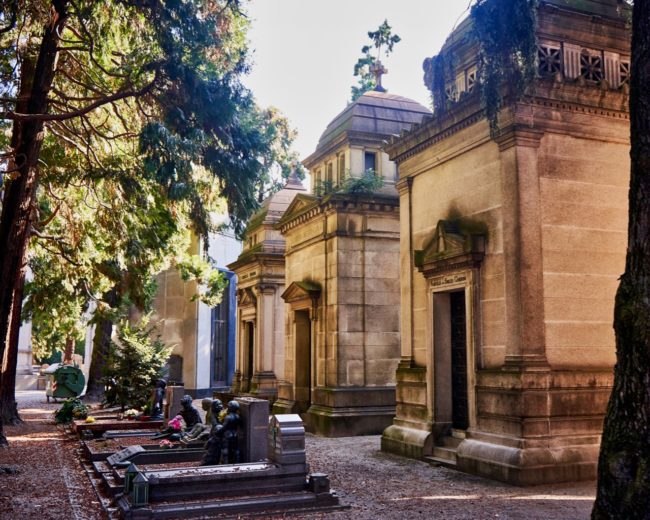
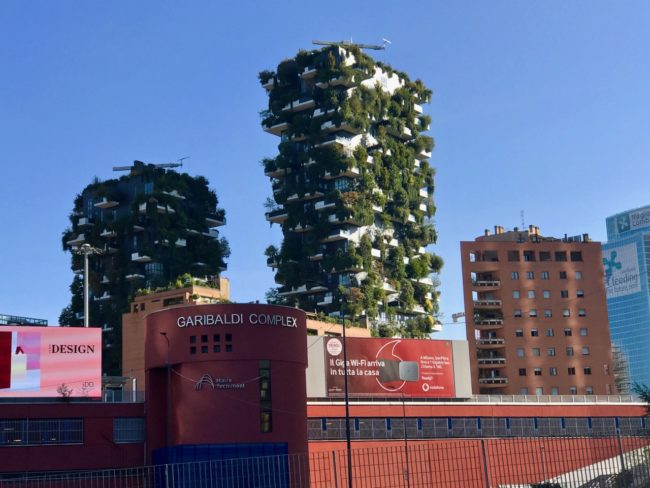







 .
. 



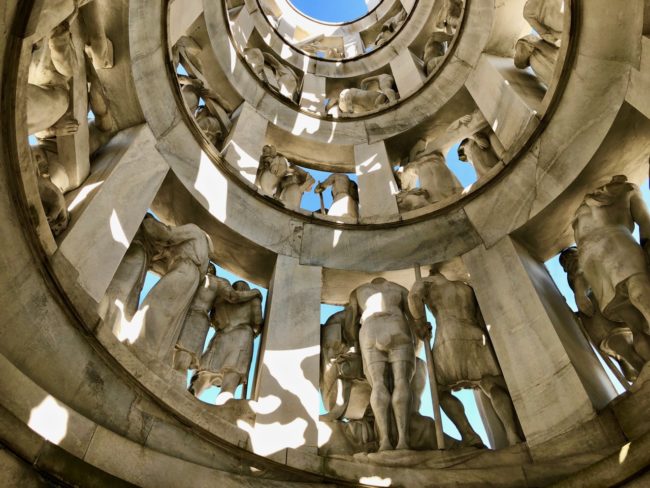


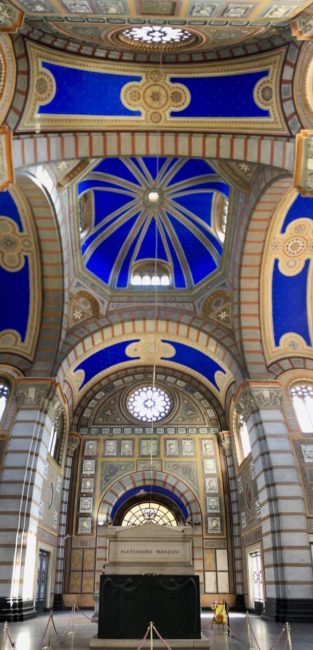








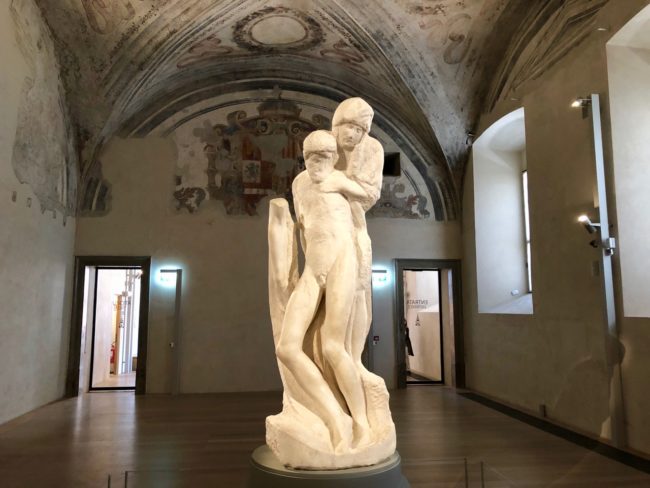












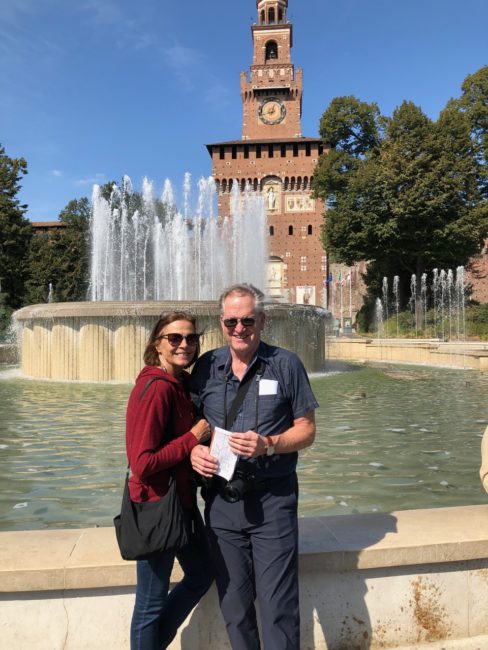 .
. 



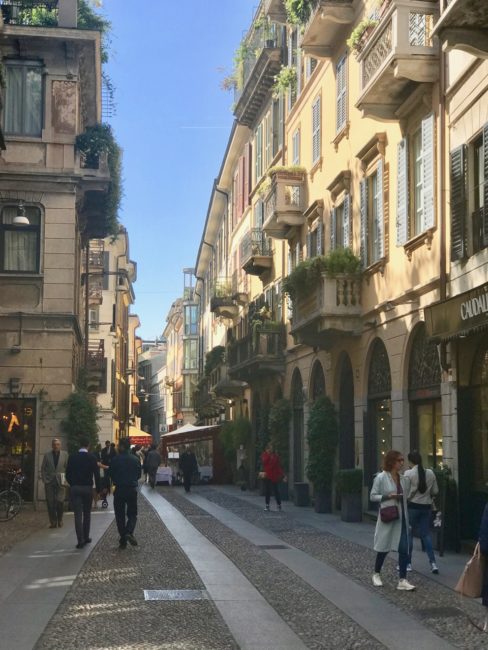
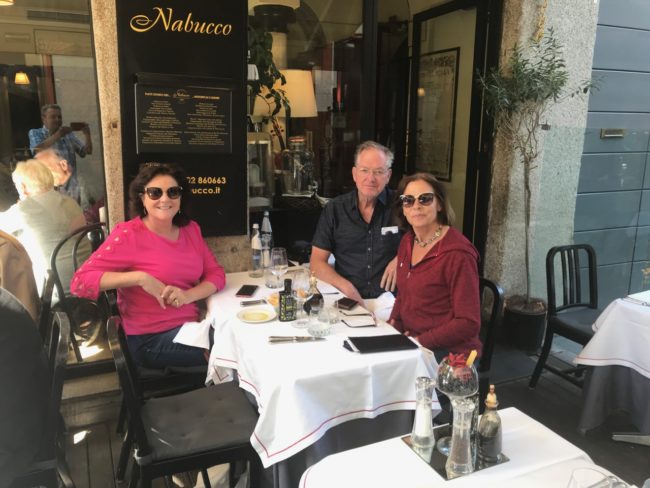











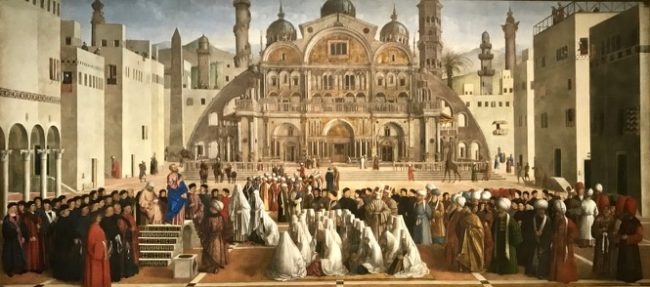
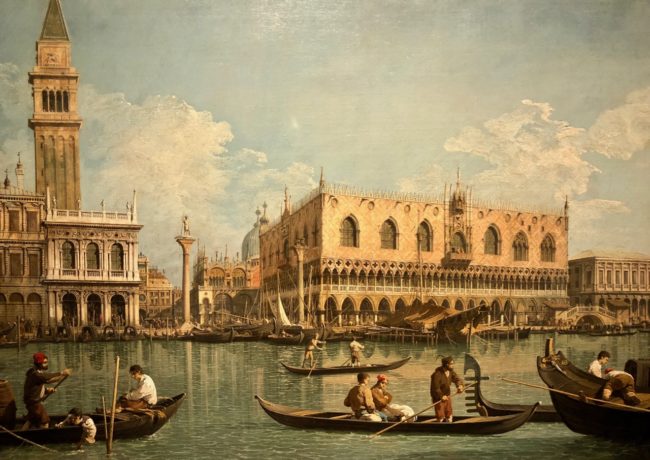
 .
. 


 .
. 


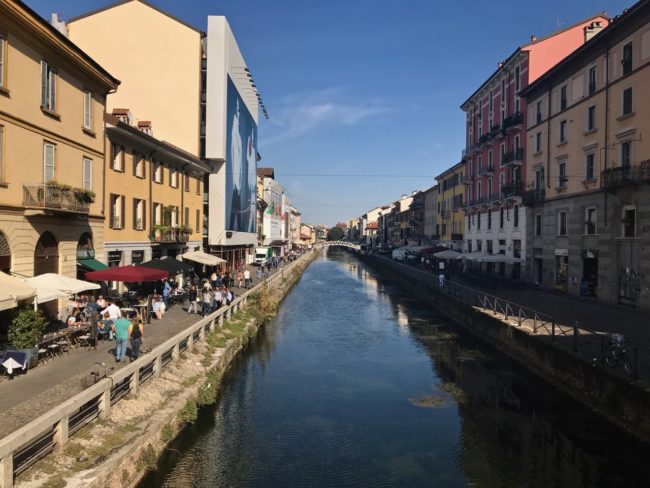



 .
. 
 .
. 








